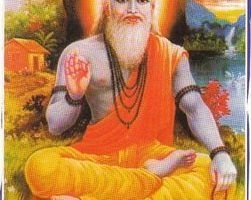I am frequently asked how I prepare for a Vedic Astrology chart reading. This depends very much on the question and context. Therefore, I never endeavoured writing an article on this topic. However, as I felt this is also an understandable and natural curiosity, I decided to post some basic features that I use as a foundation of a Vedic Astrology chart reading.
It is impossible to avoid some astrological vocabulary in this article, which may make it more interesting for those with a little background in this subject. If you happen not to have this background yet, another article on the basics of Vedic Astrology might be a better go for you.
Vedic astrology birth chart reading
In any Vedic Astrology birth chart assessment, I always start looking for both the sign and planetary aspects (rasi and graha dristhi). In this way I can see which of the signs, planets and houses are afflicted or containing positive combinations like Raj Yogas.
The next steps are to read the Vedic birth chart from various perspectives by changing the 1st house/ascendant:
- The ascendant (lagna) says a lot about the personality and body type. The ascendant is determining each of the signs mapping a house. This sets some of the essentials of the general tendencies towards certain areas of life. One translation of the Sanskrit word Lagna is ‘to stick’, meaning this is where we identify to a body and mind and will receive our lessons to go beyond this.
- Arudha Lagna to see how the world sees you, your status in society and available resources and creativity.
- See the chart from the Moon. The nakshatra and shubaphati (disposition/sign placement) reveal the mind. This is something else as personality. The mind can be seen as a bundle of thoughts and emotions through which we experience the world. We identify with these through our personality (Lagna). The Moon also shows the connection to your mother.
- From the Sun. Reading the chart from the sun shows a deeper layer of the soul, and can say a lot about profession and connection to father.
- Read the chart from the soul planet (Atmakaraka). This is the planet with the highest degree, which is the veil between your soul and the world. It shows the life lessons, deeper desires and talents that the soul has taken up learn from in this lifetime.
- From specific planets, for example, if someone asks about relationships I look at the chart as well as if the 7th house is the 1st house. Additionally, the Venus chakra is drawn, which means we look at the chart as if Venus placement is the 1ste house. Meeting a partner can be seen from 12th house again, while romance is seen from 5th house. Like this, depending on your questions, I analyse the chart from the relevant houses/placements of significator planets.
- Argāla: see how certain houses and their strength intervene positively or block specific areas of life.

Karakas, house rulers and their placements
In any Vedic astrology birth chart reading, it is essential and a basic step to look into the placements, afflictions and strengths of rulers of the houses. To explain this very short, every sign falls into a house by birth. Every sign has a ruler showing how we execute our intelligence for the areas of this house.
For example, in medical astrology the 6th and 8th house rulers are often disease-causing planets and so can every area of life be analysed. Additionally, I also check whether these rulers were active during birth (day, twilight or night) help clarifying these personal traits even more.
It is important to also always include the so-called karakas of the houses herin. These karakas, or the natural significators of a house are eventually the highest authority of the specific area of life. The best flowing stream of life energy is found when the karaka, house lord and planets in a house are in tune with each other.
In this step of the chart reading, I look at the house and sign placement of the karaka and the ruler of the house. The results depend on your questions, but generally it is best to have these placed in a kendra house (1,4,7, 10) or kona (5,9) and not in dusthana houses (6,8,12).
These placements can be seen from Lagna (for the personal gain), from Moon (how comfortable one is), and from any house to see the relationship and results from this particular areas of the house.
Panchanga in a Vedic Astrology chart reading
Panchanga is the Vedic calendar used for timekeeping. It consists out of 5 limbs of which I mostly use the two mentioned below extensively in my readings.
Nakshatras and their rulers
In a Vedic Astrology chart, every planet is also placed in one of the nakshatras. The planets ruling these nakshatras are co-determening the results of the planets. Especially the Moon’s nakshatra is important but also the ascendent nakshatra is of influence to the personality.
The 27 nakshatras are ordered in 9 different types, the so-called navatara. These can be counted either from the Moon or from the ascendant and show the role of the nakshatra (and its ruling planet) for your horoscope.
It is pivotal to examine this in a Vedic Astrology chart reading because the outcome can change the role of a planet a lot. Yes, this also explains certain ambiguities. which are as much part of astrology as part of daily life!
Tithi and their rulers
There are 30 Tithi divisions, which are based on the movement of the Sun and Moon simultaneously. To be exact, these are based on the separation between these two luminaries. This separation shows our desires that caused rebirth and how we project these on others. For this reason it is strongly connected to Venus (as a planet and Jala (water).
The placement and nature of the lord of the tithi in a Vedic Astrology chart shows a lot on how we deal with relationships. Placement in watery signs gives most harmonious results for relationships, while in fiery planets in fire signs can produce a bit more arguments or fights (which are less fun, but of course also serve their purpose….in the bigger picture…)
The 7th house of the planet ruling the tithi shows the area of life that we desire to experience, and where we have to learn from our flaws simulteniously. The house of the so-called tithi Bīja indicates the way that the desire gets manifested.
Tithis are also responsible for breaking down food (as it absorbs the sunlight) whereas the nakshatra show the quantity of the available food.
And whenever some planets are aspects in your chart are not aligned Vedic Astrology has remedies to either solve or cushion it. This can be for example: certain donations, mantras, meditations, herbs or reciting certain slogans relating to the many deities of India….or just a change in perspective, life goals etc. can do a lot good.
> read more on Vedic remedies here ~

Karana: what and how to accomplish
Like the tithi represent the water element, the karana represent earth. In every tithi there are 2 karanas, but there are only 11 different karanas, which can be divided in movable and fixed. It shows us what we can accomplish in this lifetime.
It is therefore very important to assess the ruler of the karana in the Vedic Astrology horoscope. For most practical results, this ruler is best placed in earth signs, for example, for business Virgo is great. Placement in other signs gives other opportunities, like work and travel in airy signs, healing professions in water signs and leadership in fiery signs.
Vara: weekday lord, fire and our vital energy
The vara or weekday lord shows our agni, the digestive fire. In India Agni has been worshipped ever since the Vedic era. Digestion is vital for one’s health as it is the first step in assimilating food. In a Vedic Astrology chart one would normally focus on the 5th and 6th houses for digestion, but the Vara lord does play a role in kindling the digestive fire (just like the Lagna lord and Lagna as well). Digestions and assimilation provide comes energy to do actins in the world and maintain one’s own body.
Next to digestion, fire also carries light, which is here symbolic as well for self-realisation/enlightenment.
Shadbala and Asthakavarga
Shadbala in chart readings
Though not applied rigidly, I do use Shadbala in my analysis. This is a way to show the strength for each planet. This calculation includes factors like (not exhaustive):
- The positional strength: every planet has a strength det called determined by the sign placement which is called Sthana Bala).
- Directional strength: all planets have a certain strength depending on the house placement which is called digbala.
- Divisional strength: it looks into the strength of the planet in 7 of the divisional charts.
Shadbala is a good tool to get an impression of the strength of the planets, but the role of a planet always depend on house lordship, afflictions, conjunctions with other planets and placement.
Asthakavarga
In a Vedic birth chart reading asthakavarga can be used to see the strength of the signs. This is mostly used for assessing the results of transits of slow moving planets, but it also gives an impression of the strength of the signs, houses and planets.
Vimshopaka
This is in equation found in the Parashara Hora Sastra which shows the strength of the various planets across the divisional charts. The placement of the planets are given certain points in each verge (division) and the final scores gives a good impression of the strength of the planet.

Divisional Vedic Astrology charts (Vargas)
Depending on your questions I examine the relevant varga charts. In Vedic Astrology there are specific charts for many subjects of life. They show your potential in, for example, study (D24), relationship (D9), career (D10) and children (D7).
The Vedic birth chart (D1) (and partly D9 chart) show your personal traits, the functioning of the mind, personality, physical body and latent tendencies herin.
The different Vedic divisional charts interact with your main birth chart and show the bigger picture of these areas. Therefore it is always necessary to read these charts simultaneously.
Such a criss-cross analysis of the main ascendant lord, or the relevant planets (like Venus for relationships or the ruler of the 10th house for career) reveal the larger dynamics at work between you and the world.
These so-called Varga charts are very sensitive to the correct birth time. They all get calculated from the Vedic birth chart, but show a more detailed and more precise analyses. In the D3 and D30 one can learn a lot more about diseases, body parts and weaknesses for example.
The navamasha (D9) chart takes a special role herin as its results often show general trends and often merge with the birth chart. Depending on how the Lagna lord behaves and where it feels more comfortable, either the navamsha or birth chart, determine the results in later life.
In case the lagna lord is neither comfortable in either of these two charts, life may shift to the D60 chart and become a continuation of the previous life[1]See this YouTube from Sanjay RathJI for explanation.
Dasha time periods
In any chart reading dashes are important. I mainly use two dashas: vimshottari and narayana. The vimshottari dashas I always adapt to the placement of the Moon. Depending on this placement, we take a different Nakshatra to start from.
There are also variations of this dasha possible for example when we find Venus ruling the D9 lagna and for when the ascendent is much stronger than the Moon for example. The results shows what planetary time periods you are going through.
The narayana dasha operates from the sign and therefore activates certain houses more instead of planets.
I trust this article gives some idea about which factors I include in a consultation. Of course there are many more factors, like varspahal (Vedic birthday), bhava chart and the chara Karakas, which are relevant and are included whenever needed.
Click here to read more about possible consultations




